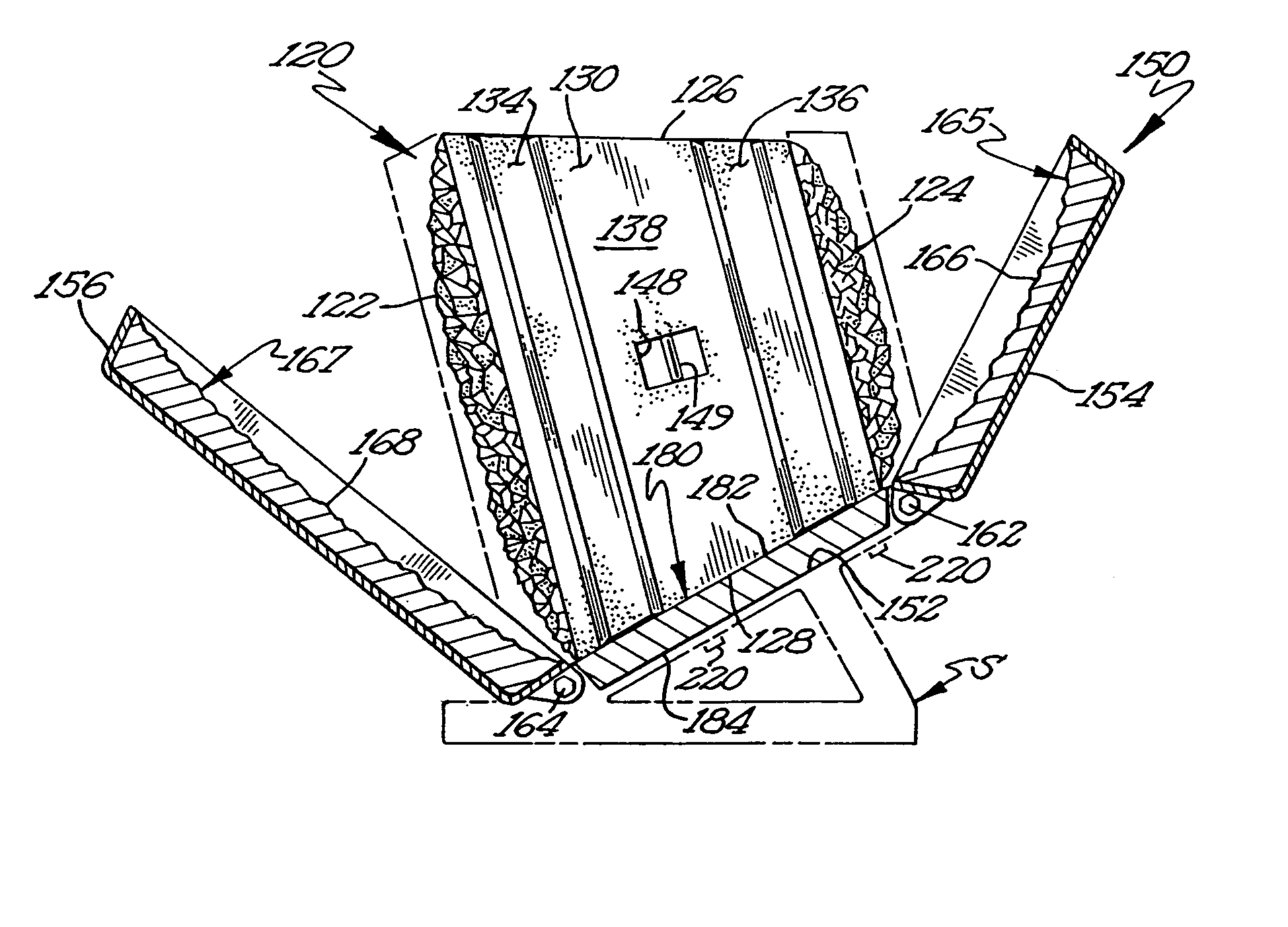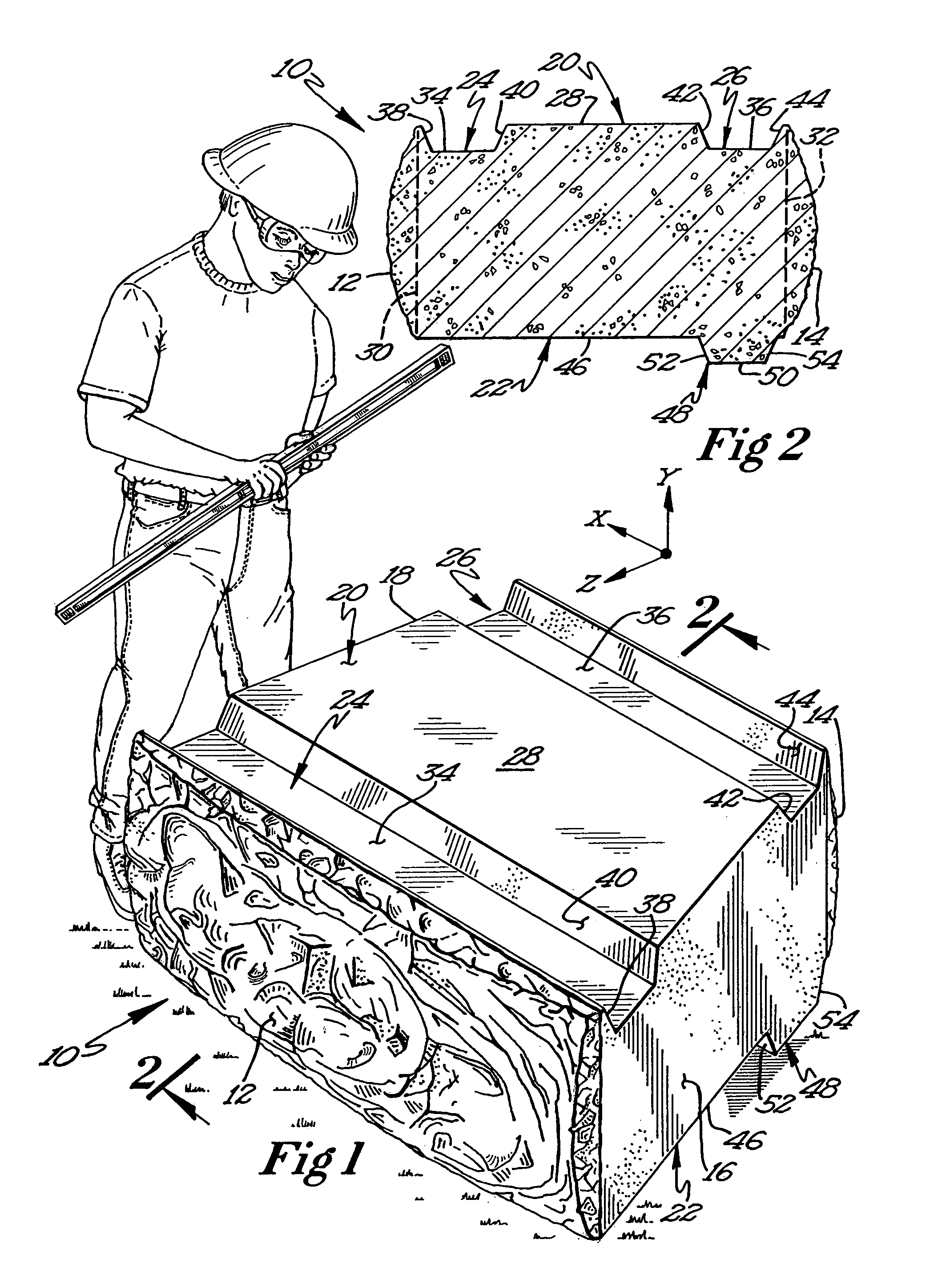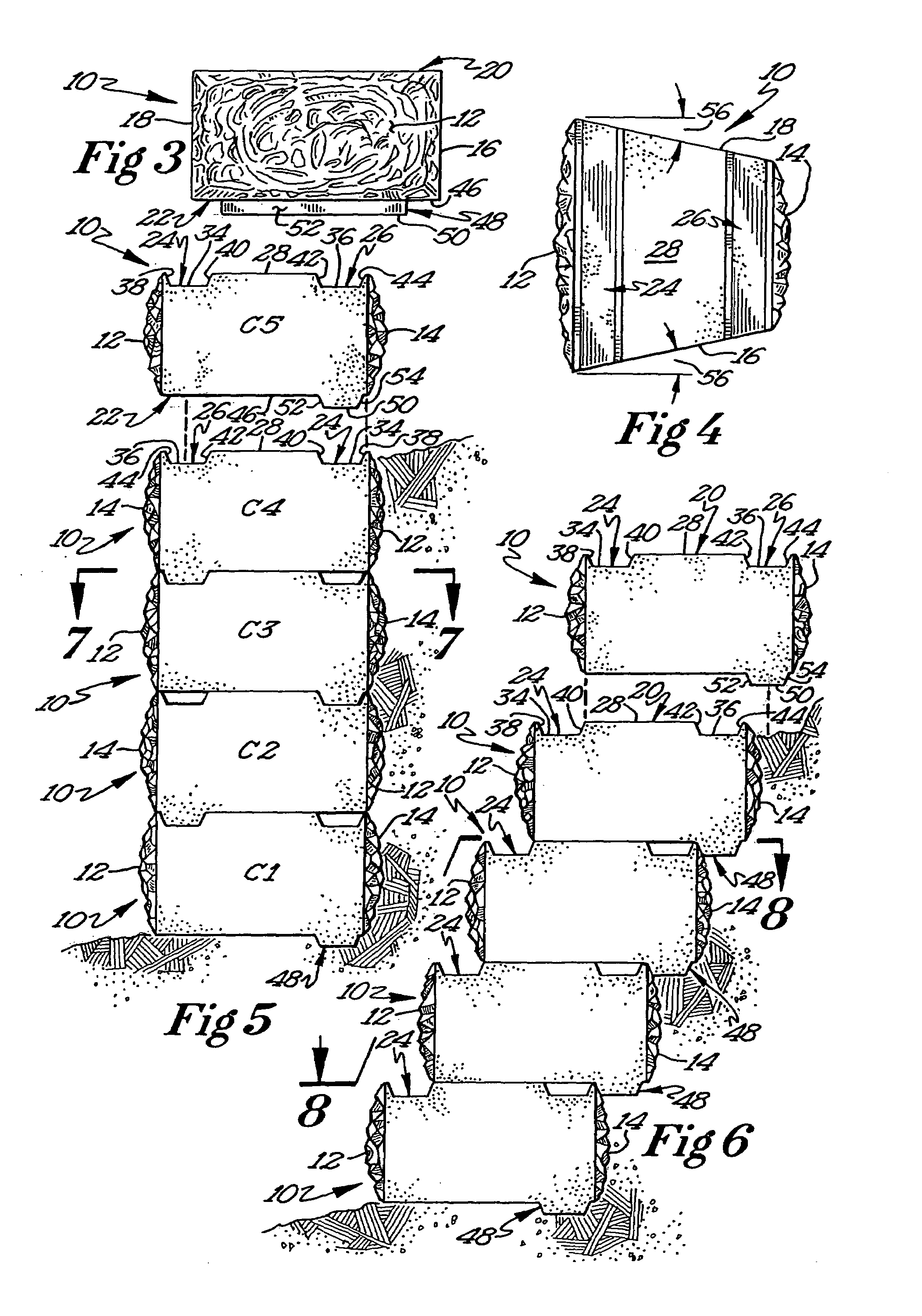Wall block mold
a wall block and mold technology, applied in the field of masonry blocks, can solve the problems of inability to produce a block with a roughened facing that is bowed or curved, adds to the time and cost of the finished product, and is relatively small
- Summary
- Abstract
- Description
- Claims
- Application Information
AI Technical Summary
Benefits of technology
Problems solved by technology
Method used
Image
Examples
Embodiment Construction
[0052]A preferred embodiment of a block of the present invention is depicted in FIG. 1. As can be seen, the block 10 is generally trapezoidally shaped and includes a front surface 12, a rear surface 14, a pair of opposed side surfaces 16 and 18 that extend between the front 12 and rear 14 surfaces, a top surface 20, and a bottom surface 22. The front surface 12, as shown, is rough textured and substantially non-planar, and extends outwardly with respect to the front edges of the top, bottom, and opposed side surfaces. Preferably, the maximum extent or relief of the outward extension is in the range of about 2.5 to 33.3 percent of the height of the block, taken in the y direction in a three-dimensional coordinate system. The rear surface 14 is similarly textured (see, for example, FIGS. 2, 4, and 7-12) and also extends outwardly with respect to the rear edges of the top, bottom, and opposed side surfaces. As with the front surface 12, the maximum outward extent or relief of the rear ...
PUM
| Property | Measurement | Unit |
|---|---|---|
| volumes | aaaaa | aaaaa |
| area | aaaaa | aaaaa |
| depth | aaaaa | aaaaa |
Abstract
Description
Claims
Application Information
 Login to View More
Login to View More - R&D
- Intellectual Property
- Life Sciences
- Materials
- Tech Scout
- Unparalleled Data Quality
- Higher Quality Content
- 60% Fewer Hallucinations
Browse by: Latest US Patents, China's latest patents, Technical Efficacy Thesaurus, Application Domain, Technology Topic, Popular Technical Reports.
© 2025 PatSnap. All rights reserved.Legal|Privacy policy|Modern Slavery Act Transparency Statement|Sitemap|About US| Contact US: help@patsnap.com



